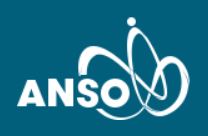Project title : “Strengthening the potential of algal proteins for food colouring and fortification using high-pressure technology”
Principal Investigator (PI): Dr Simeon Minic, Assistant at Faculty of Chemistry, University of Belgrade,
University of Belgrade – Faculty of Chemistry (UBFC), Department of Biochemistry & Center of Excellence for Molecular Food Sciences, Serbia
Collaborating Organisations:
- Laboratoire Leon Brillouin, UMR12 CEA-CNRS, France
- Department of Food Science and Technology, School of Agriculture and Biology, Shanghai Jiao Tong University (SJTU), China
- University of Donja Gorica (UDG), Faculty of Food Technology, Food Safety and Ecology, Montenegro
- NHRF – National Hellenic Research Foundation, Greece
- Institute of Chemistry, SAS – Slovak Academy of Sciences, Slovakia
- University of Belgrade, INEP – Institute for Application of Nuclear Energy
Total budget of the project: $150,000.
Duration: 2022-2024
Project funded by the non-profit, non-governmental international scientific chinese intiative “ANSO – Alliance of International Science Organizations“.

Background
Algal phycobiliproteins (PBPs), mostly phycocyanin (PC) and phycoerythrin (PE), are increasingly recognised as safe and affordable, highly bioactive natural food colourants in place of carcinogenic chemical ones. Their vivid colours originate from covalently bound open-chain tetrapyrrole chromophores. The algal pigments market has been expected to grow at the compound annual growth rate (CAGR) of 4% from 2019 to 2025 to cross $ 452.4 million, with the People's Republic of China as the key trading partner. The challenge for greater industrial use of PBPs as food colourant is to overcome the obstacles related to colour preservation during technological processes and storage, related to their low stability at high temperatures required for food treatment.
High-pressure processing (HPP) allows gentle preservation of food by HP without additives or heat. The advantages of HPP include reduction of energy costs, green food processing, and the conservation of food nutritional values, colours, and flavours. This emerging technology has already shown applications in food texturisation, freezing, gelation, and digestibility.

Objectives
The general purpose of the proposed project is to employ HPP to PBP-fortified food to preserve and stabilise their colours. We aim to improve the HP stability of PBP colours by adding natural food ingredients (vitamins, sugars, polyphenols, or whey proteins). The second use of HPP is to encapsulate PBPs into solid food matrices, such as polysaccharide or protein gels, to enforce the bioactive activities of obtained products and their overall functional properties.
Methodology & Work plan
We will conduct a comprehensive set of techniques to tackle PBPs colour stability and bioactivity in food systems:
- PBPs will be produced (photobioreactors) and purified (chromatography) from cyanobacteria and red algae
- We will study the HP stability of PBPs by optical spectroscopy and small-angle scattering techniques.
- We will design a strategy to improve the pressure stability of PBPs by adding sugars, bioactive polyphenols, vitamins, microelements or pH adjustments. The binding of these food-derived ligands to PBPs will be studied by fluorescence spectroscopy and surface plasmon resonance techniques.
- The structural/functional properties of gels obtained by HP-induced encapsulation of PBPs in food matrices will be analysed using: microscopy techniques, rheology, small-angle scattering and texture profile analysis.
Outcomes
Our multidisciplinary team comprises renowned scientists and their research teams from 6 countries (7 scientific research institutions). This collaborative network will join efforts in tackling global challenges, including green development and human well-being, following the vision and mission of ANSO.
Through the employment of green HPP, the proposed project will broaden the application potential of PBPs as colourants and nutraceuticals, which can provide safer, healthier, and commercially attractive new food products at an acceptable price.
With the full implementation of this ANSO collaborative project, we expect a broad impact in the new scientific collaborations that will result in quality scientific references and exciting opportunities for the commercial application of stabilised PBPs.



